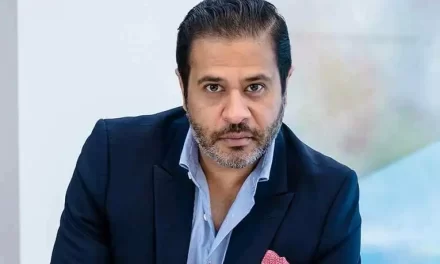Rowdy Oxford is a seasoned leader with over two decades of experience in national security, emergency response, and commercial strategy. A U.S. Army veteran, Oxford currently serves as a Regional Emergency Preparedness Liaison Officer (EPLO) to FEMA, advising on disaster coordination, crisis response, and Defense Support of Civil Authorities (DSCA). In this role, he bridges military and civilian efforts during national emergencies, ensuring swift and effective resource mobilization.
Throughout his career, Oxford has held senior leadership roles in the defense, safety, and industrial sectors, overseeing multimillion-dollar business development initiatives and strategic growth across North and South America. He is known for driving mission-critical innovation, enhancing operational resilience, and building high-performing teams across complex environments. Oxford’s expertise spans strategic planning, market expansion, crisis logistics, and public-private coordination. His work has directly supported federal agencies, law enforcement, and emergency response teams worldwide.
A steadfast advocate for service, innovation, and results-driven leadership, Oxford continues shaping policy and practice in public and private arenas. Outside of his professional pursuits, he is passionate about mentoring future leaders, contributing to veteran initiatives, and spending time in the outdoors. Oxford’s career reflects a deep commitment to national service, operational excellence, and building resilient communities.
Please introduce yourself to us—tell us where you’re from, your family background, your academic journey, and how your early interests developed into the career path you pursued.
I’m Rowdy Oxford, and I’m originally from a small town where public service was part of everyday life. My father was a firefighter, and my mother worked in healthcare, so I was raised to value discipline and service. After high school, I pursued a 20-year military career, which laid the foundation for my later work in national emergency response and public safety leadership. I now serve as a liaison officer to FEMA and advise on disaster response coordination. My civilian work includes leading high-stakes sales and strategy in the defense and emergency sectors. Outside work, I enjoy hiking and mentoring.
What would you say are your greatest strengths, and could you candidly share one weakness and how you’re working on it?
One of my greatest strengths is composure in high-pressure environments. Whether coordinating disaster logistics or leading a strategic pivot in a corporate setting, I’m known for keeping teams focused and productive under stress. A weakness I’ve worked on is trying to take on too much personally. I hesitated to delegate early in my career, thinking it showed accountability. I’ve since learned that empowering others is essential for scalable leadership. I’ve focused on mentoring emerging leaders and trusting team processes, which develop talent and free me up to focus on vision and strategy.
Looking back, what moment or decision had the most significant impact on the direction of your career?
A defining moment was when I shifted from active military service to becoming an Emergency Preparedness Liaison Officer for FEMA. That move transformed my understanding of crisis management by exposing me to the civilian side of emergency response. It helped me see the need for stronger collaboration between the military, government, and private organizations. From then on, I dedicated myself to building bridges across sectors, whether advising on national response strategies or guiding mission-critical business development efforts supporting those on the front lines.
What were your favorite subjects during school, and how have they influenced your professional approach?
I was drawn to history, political science, and mathematics. History offered insight into leadership and consequences. Political science taught me how institutions and governance work, and math sharpened my analytical thinking. These subjects shaped my ability to think critically and operate strategically in military and business contexts. Today, I use that same mindset to evaluate operational risks, develop response plans, and lead high-performance teams in dynamic environments. My education provided more than facts. It gave me the frameworks to understand complexity and make informed decisions under pressure.
What is one recent development in the emergency management or defense sector that you think is particularly important, and why?
The growing use of predictive analytics in disaster response is a major development. We now have tools that use data to forecast weather events, model population movement, and optimize real-time resource deployment. This is transforming how agencies prepare and respond to crises. For example, evacuation zones can be dynamically adjusted based on real-time data, saving time and lives. But technology alone isn’t enough. It must be integrated into well-trained systems with cross-agency coordination. This advancement shows how, when properly implemented, innovation can enhance readiness and resilience at scale.
How is the private sector shaping the future of public safety, especially given your experience advising and working with emergency response organizations?
The private sector is critical in innovating the tools and technologies used by first responders and emergency managers. From advanced communications systems to next-generation protective gear, private companies are delivering solutions that improve safety and operational efficiency. My role has often involved working with these firms to ensure their offerings align with real-world field needs. I’ve also worked on strategic planning to help these innovations reach the right markets, including municipal safety agencies and federal response teams. Public safety will increasingly depend on innovative partnerships between private innovation and public mission.
Can you describe a difficult ethical decision you had to make under pressure and how you handled it?
During a national disaster response, I was part of a team deciding how to allocate critical supplies to two regions in need, but with different levels of visible damage and political attention. Following external pressure would have been easy, but I insisted we use a needs-based framework. I brought emergency leaders, medical advisors, and logistics experts together to develop a data-driven distribution plan. We communicated our decision clearly and transparently. It wasn’t the easiest path, but it was the right one. That moment reinforced my belief in principled leadership, even with high stakes.
How does your leadership style differ between military and corporate environments, and what core values do you carry across both?
In the military, leadership is command-driven, clarity, chain of command, and execution are everything. In the private sector, you rely more on influence, emotional intelligence, and agility. I’ve adapted by blending both styles. I bring decisiveness and mission focus from my military background, while embracing collaboration and creativity in business settings. My core values remain the same regardless of environment: integrity, accountability, and service. Whether briefing FEMA or coaching a commercial team, I lead by example, build trust, and focus on outcomes that benefit individuals and the larger mission.
Extempore Topic: “The Role of Technology in Modern Emergency Response.”
Technology is rapidly transforming emergency response. Today’s responders use real-time tracking, AI-powered decision tools, and interoperable communication platforms to operate more safely and effectively. Drones provide situational awareness in disaster zones, and wearable tech monitors responder health in the field. But tech alone isn’t the answer. It must be backed by training and leadership. We must also ensure smaller jurisdictions, not just large urban centers, can access these advancements. The ultimate goal is smarter, faster, and more resilient emergency operations. When done right, technology becomes a force multiplier that enhances human decision-making in critical moments.
How have you applied both your military and business experience to solve a real-world challenge?
One key example involved coordinating logistics after a large-scale natural disaster. My military experience helped create a command structure and streamline resource delivery, while my business background allowed me to navigate vendor contracts, prioritize supply chains, and optimize costs. I led a cross-functional team that included federal officials, local responders, and commercial partners. We built a plan that deployed resources faster than previous responses and saved money. It was a reminder that when you bring the structure of military operations together with the adaptability of business strategy, you can tackle even the most complex challenges effectively.




